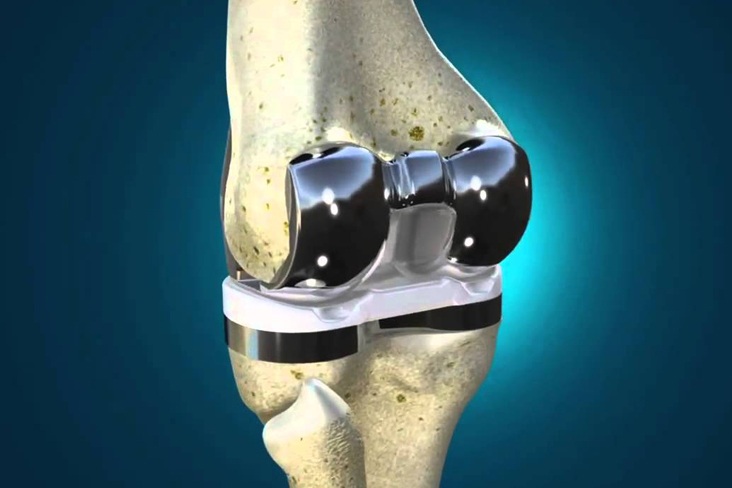The Artificial Cartilage Implant Market focuses on the development, manufacturing, and sale of implants designed to replace damaged cartilage in various parts of the body, including the knee, hip, and other joints. Artificial cartilage implants provide an alternative to more invasive procedures like total joint replacement and aim to restore mobility and alleviate pain in patients with cartilage damage due to osteoarthritis, injury, or degenerative conditions.
Key Drivers
- Rising Incidence of Osteoarthritis and Joint Degeneration:
- Osteoarthritis is one of the most common joint disorders globally, leading to cartilage deterioration and joint pain. With an aging population and increased obesity rates, the demand for less invasive solutions like artificial cartilage implants is growing.
- Advancements in Implant Technology:
- Continuous improvements in biomaterials and implant design have made artificial cartilage implants more durable and biocompatible. These innovations reduce the risk of rejection, enhance longevity, and provide patients with better outcomes.
- Minimally Invasive Procedures:
- Artificial cartilage implants offer a minimally invasive option compared to total joint replacement surgeries. This leads to faster recovery times, reduced pain, and shorter hospital stays, making these implants more attractive to both patients and healthcare providers.
- Increasing Healthcare Expenditure and Awareness:
- The rise in healthcare spending in both developed and emerging markets has contributed to greater awareness of joint preservation techniques, including artificial cartilage implants. Patients are increasingly seeking alternatives to total joint replacement.
- Expanding Geriatric Population:
- As the global population ages, the prevalence of joint-related diseases increases. The elderly are particularly prone to osteoarthritis and cartilage damage, making them key candidates for artificial cartilage implants.
Key Trends
- Development of Biomimetic Materials:
- Research into biomimetic materials that closely replicate the function and structure of natural cartilage is gaining traction. These materials aim to improve implant integration, durability, and long-term success rates.
- Focus on Joint Preservation:
- Surgeons and patients alike are seeking to preserve the natural joint for as long as possible. Artificial cartilage implants provide a solution that allows for joint preservation, avoiding the need for full joint replacements.
- Regenerative Medicine and Tissue Engineering:
- Combining artificial cartilage implants with regenerative medicine techniques, such as stem cell therapy, is an emerging trend. These hybrid approaches aim to regenerate damaged cartilage while providing the support of an implant.
- Patient-Specific Implants:
- Customized or patient-specific artificial cartilage implants, created using 3D printing technologies, are being developed to better fit individual anatomy. These implants offer improved outcomes by ensuring a better match with the patient’s joint structure.
- Clinical Trials and Research:
- Ongoing clinical trials are testing new materials, designs, and approaches to artificial cartilage implantation. Positive results from these trials are expected to support market growth by demonstrating the safety and efficacy of new products.
Challenges
- High Cost of Implants:
- Artificial cartilage implants can be expensive, limiting their accessibility, particularly in lower-income regions. The cost is often a barrier for patients without adequate health insurance or financial resources.
- Regulatory Hurdles:
- Gaining regulatory approval for new implant designs can be a time-consuming and costly process. Variability in regulatory standards across regions can delay the availability of innovative products in certain markets.
- Limited Long-Term Data:
- While artificial cartilage implants are designed to be durable, long-term data on their performance and safety are still limited. This lack of long-term data may cause some hesitation among patients and surgeons.
- Competition from Alternative Treatments:
- Alternatives such as hyaluronic acid injections, stem cell therapy, and partial joint replacements present competition to artificial cartilage implants. Some patients may opt for these less invasive or experimental treatments instead.
Future Outlook
The artificial cartilage implant market is expected to grow steadily over the next decade, driven by the demand for minimally invasive joint preservation techniques and advancements in implant materials. As research into biomaterials, regenerative medicine, and 3D printing continues, the next generation of artificial cartilage implants will likely offer improved durability, biocompatibility, and patient outcomes.
Click Here, To Get Free Sample Report https://stringentdatalytics.com/sample-request/artificial-cartilage-implant-market/14564/
Market Segmentations:
Global Artificial Cartilage Implant Market: By Company
Biomet
Azellon Cell Therapeutics
Anika Therapeutics
Johnson & Johnson
CellGenix
Medtronic
Stryker Corporation
Smith & Nephew
Global Artificial Cartilage Implant Market: By Type
Upper Extremity Joints
Lower Extremity Joints
Vertebral Joints
Global Artificial Cartilage Implant Market: By Application
Hospitals
Clinics
Ambulatory Surgical Centers
Global Artificial Cartilage Implant Market: Regional Analysis
The regional analysis of the global Artificial Cartilage Implant market provides insights into the market’s performance across different regions of the world. The analysis is based on recent and future trends and includes market forecast for the prediction period. The countries covered in the regional analysis of the Artificial Cartilage Implant market report are as follows:
North America: The North America region includes the U.S., Canada, and Mexico. The U.S. is the largest market for Cold-chain Pharma in this region, followed by Canada and Mexico. The market growth in this region is primarily driven by the presence of key market players and the increasing demand for the product.
Europe: The Europe region includes Germany, France, U.K., Russia, Italy, Spain, Turkey, Netherlands, Switzerland, Belgium, and Rest of Europe. Germany is the largest market for Cold-chain Pharma in this region, followed by the U.K. and France. The market growth in this region is driven by the increasing demand for the product in the automotive and aerospace sectors.
Asia-Pacific: The Asia-Pacific region includes Singapore, Malaysia, Australia, Thailand, Indonesia, Philippines, China, Japan, India, South Korea, and Rest of Asia-Pacific. China is the largest market for Cold-chain Pharma in this region, followed by Japan and India. The market growth in this region is driven by the increasing adoption of the product in various end-use industries, such as automotive, aerospace, and construction.
Middle East and Africa: The Middle East and Africa region includes Saudi Arabia, U.A.E, South Africa, Egypt, Israel, and Rest of Middle East and Africa. The market growth in this region is driven by the increasing demand for the product in the aerospace and defense sectors.
South America: The South America region includes Argentina, Brazil, and Rest of South America. Brazil is the largest market for Cold-chain Pharma in this region, followed by Argentina. The market growth in this region is primarily driven by the increasing demand for the product in the automotive sector.
Click Here, To Buy Premium Report https://stringentdatalytics.com/purchase/artificial-cartilage-implant-market/14564/?license=single
Key Questions Answered in This Report:
- How has the global Market performed so far and how will it perform in the coming years?
- What are the key regional Markets?
- What has been the impact of COVID-19 on the global Market?
- What is the breakup of the Market based on the type?
- What is the breakup of the Market based on the application?
- What is the breakup of the Market based on the manufacturing process?
- What is the breakup of the Market based on the price range?
- What are the various stages in the value chain of the industry?
- What are the key driving factors and challenges in the industry?
- What is the structure of the global Market and who are the key players?
- What is the degree of competition in the industry?
About Stringent Datalytics
Stringent Datalytics offers both custom and syndicated market research reports. Custom market research reports are tailored to a specific client’s needs and requirements. These reports provide unique insights into a particular industry or market segment and can help businesses make informed decisions about their strategies and operations.
Syndicated market research reports, on the other hand, are pre-existing reports that are available for purchase by multiple clients. These reports are often produced on a regular basis, such as annually or quarterly, and cover a broad range of industries and market segments. Syndicated reports provide clients with insights into industry trends, market sizes, and competitive landscapes. By offering both custom and syndicated reports, Stringent Datalytics can provide clients with a range of market research solutions that can be customized to their specific needs.
Contact Us
Stringent Datalytics
Contact No- +1 346 666 6655
Email Id- sales@stringentdatalytics.com




Leave a Reply